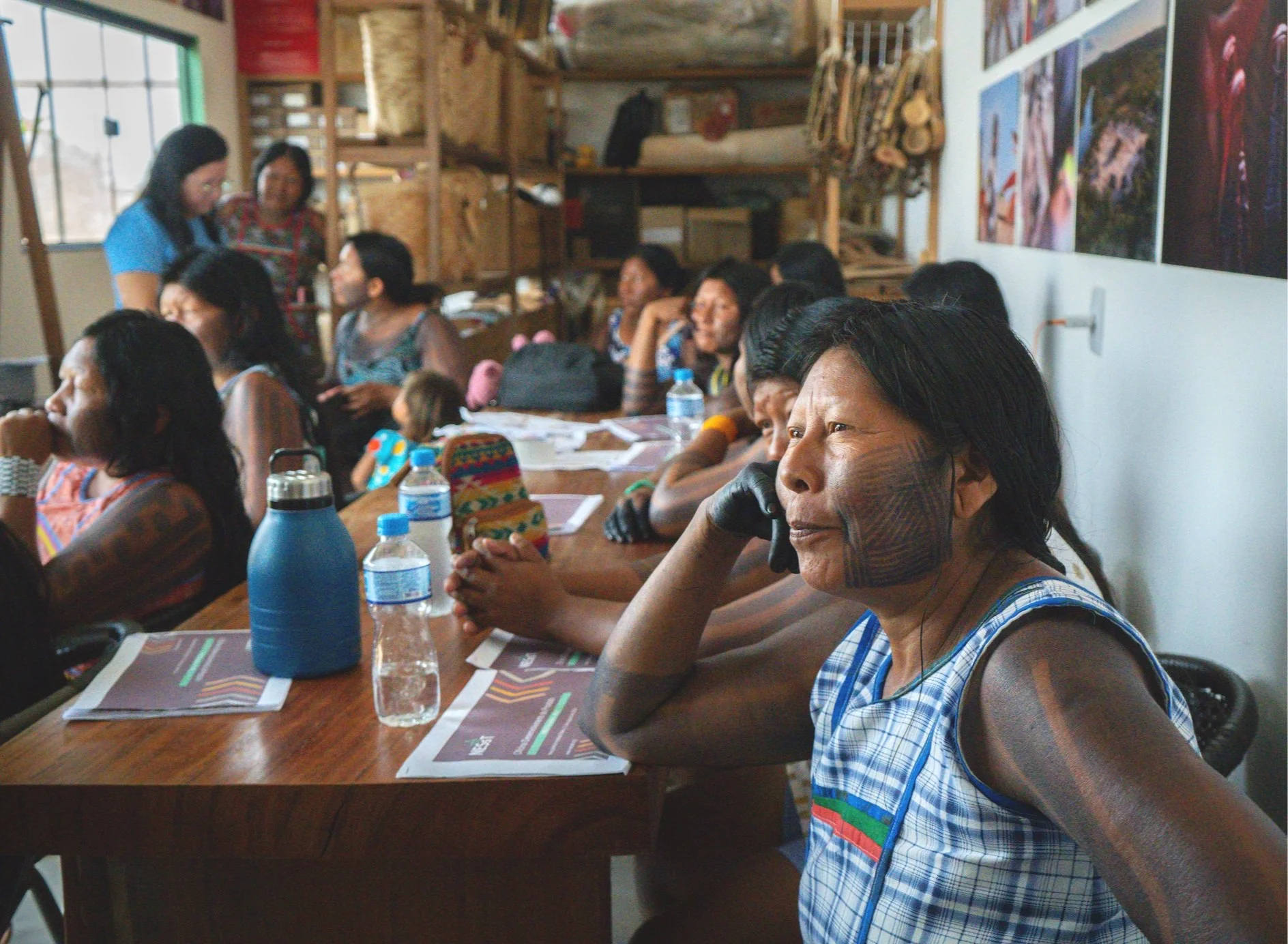Today, only a small share of the credit offered by financial institutions reaches those who protect the forest. If governments and multilateral organizations work together to change this, sustainable businesses can thrive — and so can the Amazon.
This article is part of NESsT’s series presenting key findings from the report Unlocking the Potential of the Global Financing Ecosystem for a Sustainable Amazon Bioeconomy from the Perspective of Local Communities developed in 2024 from interviews with cooperatives and bioeconomy entrepreneurs in Brazil, Peru, and Colombia.
The socio-bioeconomy offers a concrete way to generate income while conserving the forest. Grounded in the sustainable use of biodiversity and the leadership of local communities, it spans Brazil nut associations to natural cosmetics cooperatives – initiatives that are already taking sustainable forest-based businesses worldwide. Segundo o documento, According to the Global Bioeconomy report by Nature Finance and Fundação Getúlio Vargas with support from The Nature Conservancy (TNC) and 18 other organizations, the socio-bioeconomy could reach USD 30 trillion by 2050. With 58% of the Amazon and vast biodiversity, Brazil is very well positioned in this emerging market.
A survey by the Observatory of Socio-biodiversity Economies (ÓSocioBio) estimates that in biodiversity-rich countries, the socio-bioeconomy could account for up to 2.7% of the GDP by 2030, which is equivalent to approximately BRL 316 billion. Yet, despite this potential, current financing systems continue to disadvantage socio-biodiversity enterprises. Data analyzed by ÓSocioBio, based on Central Bank statistics, show that in 2024, 91.7% of the resources from the National Program for Strengthening Family Farming (Pronaf) in the Amazon went to livestock, while less than 2% supported socio-biodiversity value chains.
Embrapa data further reinforce this picture: in the Amazon, 90% of family farming credit is directed to livestock. This imbalance means that producers who lack access to funding for sustainable activities often turn to livestock, which provides faster returns but carries a higher environmental cost.
Public policies, such as rural credit and government procurement, can play a key role in shifting the Amazon’s economy toward sustainability. Development finance institutions (DFIs) or “multilaterals”, such as the World Bank, the Brazilian Development Bank (BNDES), and the Inter-American Development Bank (IDB), also have an essential role. By aligning public policies and financing strategies, coordinating actions across ministries, and designing credit lines tailored to socio-bioeconomy enterprises, these institutions can help credit to reach those who protect the forest and enabling the socio-bioeconomy to scale.
The Role of Rural Credit in Strengthening the Socio-bioeconomy
Rural credit can play a key role in supporting sustainable forest-based businesses, but to be effective, it must reflect the realities of cooperatives, extractivist families, and forest-based value chains.
ASPROC apoia as comunidades ribeirinhas locais na produção e venda de produtos biodiversos provenientes exclusivamente da floresta tropical incluindo o peixe pirarucu.
In Amazonas, the experience of Associação dos Produtores Rurais de Carauari (ASPROC) shows that when credit reaches local communities, tangible results follow. With access to financing and the public procurement support of Brazil’s National School Feeding Program (PNAE), ASPROC was able to supply responsibly-caught pirarucu fish to public school meals – generating income for riverside families and while promoting the sustainable use of local biodiversity.
In Amapá, Associação dos Trabalhadores Agroextrativistas da Ilha de Carapanatuba (ATAIC)’s experience demonstrates a similar pattern. The organization works with families harvesting açaí, selling it to public programs such as Brazil’s Food Acquisition Program (PAA) and PNAE. These programs provide a reliable market for producers and contribute to food security in schools and public institutions. However, participating in these annual municipal calls for proposals can be challenging and the extensive documentation and operational costs sometimes outweigh the financial benefits, discouraging small associations from applying.
Meanwhile, the cooperative CooperSapó maintains an active contract with the municipality of Maués (AM) and views participation in these programs as a strategic tool to strengthen income sources for its local community.
Já a cooperativa CooperSapó mantém contrato ativo com o município de Maués (AM) e considera estratégica a participação nesses programas para fortalecer a comunidade.
Despite these advances, significant challenges remain. Reduced program budgets, delayed payments, and instability in public procurement make planning difficult for cooperatives. Without guaranteed markets and steady financial flow, many producers abandon sustainable activities and turn to alternatives with quicker returns, such as livestock – an example that may offer faster income, but that comes with greater environmental costs.
Bridging the Gap Between Incentives and Markets
ABEX used NESsT'’s investment to further promote babassu oil production as an income opportunity and to increase the number of Xikrin women it supports.
A recurring challenge in the socio-bioeconomy is the gap between production incentive and access to markets. In several regions, value chains such as camu camu (Myrciaria dubia), arazá (Eugenia stipitata), and cocona (Solanum sessiliflorum) receive support to expand production but subsequently struggle to find buyers. When incentives focus solely on increasing supply, without coordinated planning for distribution, processing, logistics, certification, or demand, the system breaks down. Families who invest in these sustainable alternatives often face losses and discouragement, highlighting the need for public policies that combine financial support with reliable market opportunities.
Examples from Peru and Colombia: A Pan-Amazonian Perspective
This challenge is not unique to Brazil. In other Amazonian countries, similar efforts aim to connect production, credit, and commercialization.
In Peru, the Ministry of Agriculture Agroideas program provides technical and financial support to improve the competitiveness of small producers, while FAE-Agro offers emergency credit to the sector. Cooperatives have used these initiatives to access local public procurement programs, though on a limited scale.
One example is NESsT portfolio enterprise Cooperativa Kanuja, in Pangoa, Junín. Cooperativa Kanuja won and implemented an Agroideas project between 2019 and 2023 to upgrade equipment and infrastructure to expand cacao production, supporting the livelihoods of 300 producers from the Asháninka and Nomatsigenga communities.
In Colombia, the Local Public Procurement Program and credit lines from the Agrarian Bank help connect producers with government purchases. Additionally, the National Bioeconomy Strategy, launched in 2020, seeks to strengthen value chains led by traditional communities, integrating sustainable production with market opportunities.
The Strategic Role of DFIs: From Funders to Key Coordinators
DFIs (Development Finance Institutions) can play a critical role in unlocking the potential of the socio-bioeconomy. According to the Organization for Economic Co-operation and Development (OECD), these institutions — typically public or public-private — are tasked with promoting sustainable development by strengthening the private sector, especially in areas where traditional investment is limited. They provide medium- and long-term financing, taking on higher risks in exchange for positive social, environmental, and economic impacts.
As part of the COP16 Colombia discussion “Unlocking Finance for a Locally Led Pan-Amazon Bioeconomy,” co-organized by NESsT and the Pan-Amazon Bioeconomy Network, we engaged in in-depth conversations with Amazonian bioeconomy entrepreneurs, as well as representatives from development banks and public and private investors.
One key contribution of DFIs is linking financing to public procurement and incentive policies. For example, loans could be conditioned on government commitments to expand programs such as Brazil’s Food Acquisition Program (PAA) and the National School Feeding Program (PNAE), ensuring that credit reaches socio-biodiversity enterprises alongside reliable public markets for their products.
Moreover, DFIs can act as coordinators across ministries and sectors. By fostering dialogue among Finance, Agriculture, Indigenous Peoples, and Environment authorities, they can help build integrated policies that connect production, financing, and markets in a strategic, structured way.
Another pathway is the capitalization of national development banks, such as BNDES in Brazil, Banco Agrario in Colombia, and Agrobanco in Peru. With support and resources from DFIs, these banks can offer financial products tailored to the socio-bioeconomy –with longer, more flexible repayment terms, lower collateral requirements, and subsidized interest rates– making credit more accessible to those who need it most.
Making Production, Finance, and Markets Work Together for the Socio-bioeconomy
The socio-bioeconomy is a proven pathway to generating local income, preserving biodiversity, and promoting sustainable development. Yet its impact remains limited by financing and institutional barriers. For the sector to grow, production, credit, and markets must be linked in a coordinated system.
Governments play a key role in expanding access to credit and strengthening public procurement programs. Development Finance Institutions can take the next step by using their influence and investment capacity to ensure that resources reach only those policies that genuinely support local communities and strengthen the forest-based economy.
Liderada por moradores da ilha, a Associação dos Trabalhadores Agroextrativistas da Ilha das Cinzas (ATAIC) é uma associação dedicada a gerar e expandir oportunidades de renda para as famílias locais.
When these pieces come together, individual initiatives can scale into high-impact solutions, reconciling economic development, social inclusion, and environmental conservation across the Amazon.
Read the full report and explore NESsT’s nine recommendations for investors to unlock the potential of a community-led bioeconomy in the Amazon here:














